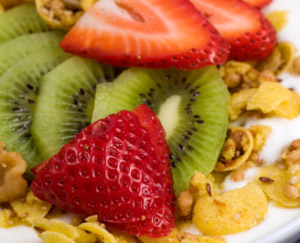
A-Z Indexes Food Health Guides
Health News |
From "Gluten-Fear" to Gluten-FreeEasy, everyday health habits
 Following a gluten-free diet does become easier with practice, and with time
Understanding the finer points of gluten—a protein found in grains such as wheat, rye, barley, KAMUT wheat, and triticale—is an important part of everyday living for people managing gluten-related diseases, such as celiac disease, psoriasis, and rheumatoid arthritis. For those with celiac disease in particular, gluten can trigger an immune response, leading to damage in the body and nutrient malabsorption And unlike some allergies and intolerances, in which you can have “a little” of the offending food, with gluten, even as little as 50 mg of gluten per day may trigger immune reactions for those with celiac disease. So it's extremely important to be aware of hidden sources of gluten and the best way to avoid traces of gluten from slipping into food. Guide yourself to a gluten-free lifeIt’s completely reasonable to mourn the loss of your carefree eating habits when you learn you have to start following a modified diet. Avoiding an ingredient as common as gluten can seem an impossible task, but be comforted: following a gluten-free diet does become easier with practice and with time. Arm yourself with knowledge and you can move from fear of gluten to freedom from gluten, regaining your health in the process. Mastering gluten-free food preparationIf only one person in the household is following a gluten-free diet, the most important task will be to prevent gluten-containing foods from contaminating gluten-free foods. The following tips will help you accomplish this goal:
Suzanne Dixon, MPH, MS, RD, author, speaker, and internationally recognized expert in chronic disease prevention, epidemiology, and nutrition, has taught medical, nursing, public health, and alternative medicine coursework. She has delivered over 150 invited lectures to health professionals and consumers and is the creator of a nutrition website acclaimed by the New York Times and Time magazine. Suzanne received her training in epidemiology and nutrition at the University of Michigan, School of Public Health at Ann Arbor. Copyright © 2025 TraceGains, Inc. All rights reserved. |
